

The ROG Strix RX 6700 XT O12G is ASUS’ premium take on the AMD Radeon RX 6700 XT. They improve on AMD’s formula by raising clock speeds to up to 2622MHz, equipping it with a large and brawny cooler, and the obligatory RGB lighting.

| GPU | Navi 22 |
| Architecture | RDNA2 |
| Manufacturing Process | 7nm TSMC |
| Boost Clock | Up to 2622MHz (Boost), Up to 2568MHz (Game) |
| Shader Processors | 2560 |
| Texture Units | 160 |
| ROPs | 64 |
| Compute Units | 40 |
| Raytracing Cores | 40 |
| Memory | 12GB GDDR6, 16Gbps |
| Memory Bus | 256-bit |
| Infinity Cache | 96MB |
| TDP | 230W |
| Power Connectors | 2x 8-pin PCIe |
| Display Connections | 3x DisplayPort 1.4a, 1x HDMI 2.1 |
| Dimensions | 322 x 141 x 56.5mm |
| Size | 2.9 Slots |

AMD’s RDNA2 architecture, also known as Big Navi, is essentially the next evolution of RDNA introduced with the Radeon 5000 series. It still uses a 7nm lithography while becoming more efficient than its predecessor. Their new generation GPUs are also boasting GPU clock speeds well beyond the 2000MHz mark, which should deliver faster performance across the board.
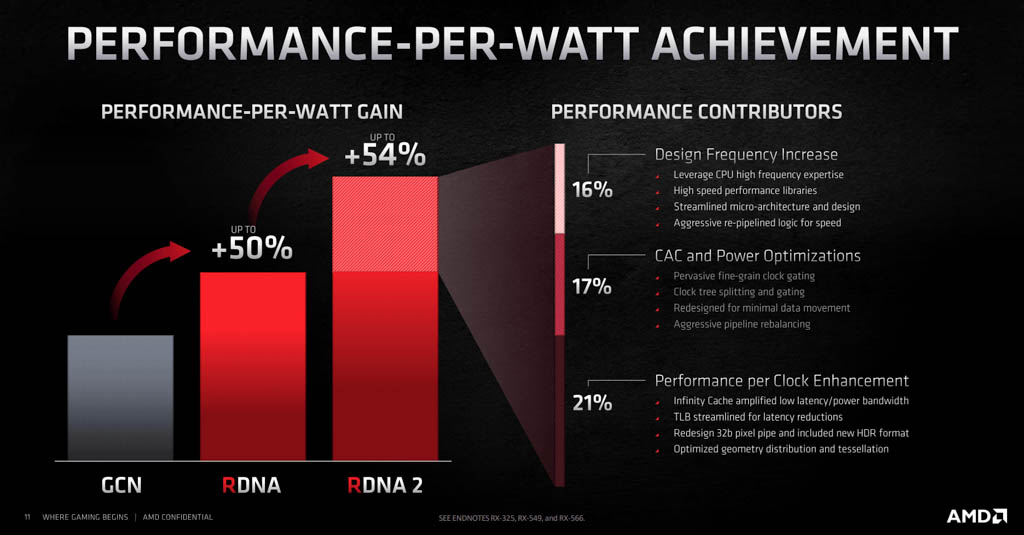
Overall, AMD is promising up to 54% gain in performance-per-watt thanks to clock enhancement, frequency increase, and varying optimizations.

One of the solutions that AMD implemented on RDNA2 is the usage of the Infinity Cache. Not to be confused with the Infinity Fabric found on their CPUs, Infinity Cache uses a 128MB cache on the die itself in order to bridge the size between of the VRAM and the traditional L2 cache found on GPUs. This allows for better bandwidth, lower latency, and faster memory access.
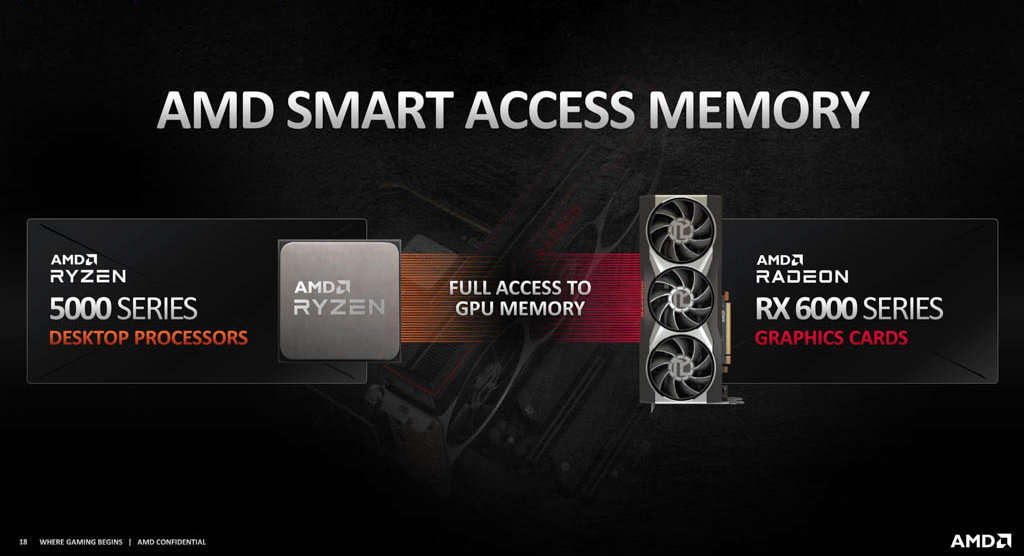
Transfers between the CPU and GPU are normally limited to a 256GB chunk. AMD’s Smart Access Memory (SAM) combines the memory of the CPU and GPU to increase that limit to reduce buffering and latency. AMD claims that SAM provides up to 10% of additional framerate to games but this increase is much more noticeable to higher resolutions.
At this time, this feature is only compatible between the RX 6000 series GPUs and Ryzen 5000 series processors on X570 boards. AMD, however, is working hard to have it compatible with NVIDIA and Intel platforms.

Big Navi will officially support ray tracing in games albeit in a lesser extent compared to the competition’s latest offerings. AMD is implementing dedicated RT cores on RDNA2-based GPUs in order to improve performance of ray tracing effects.
Deep Learning Super Sampling (DLSS) employs the use of AI and machine learning to render games at a lower resolution and outputs them at a higher resolution without sacrificing details. This means that you get the detail found on higher resolutions while still maintaining higher frame rates. At this time, however, DLSS exclusively works on select NVIDIA GPUs. AMD, on the other hand, is working on their own alternative called FidelityFX Super Resolution.
Details are still sparse on the FidelityFX Super Resolution as it is currently in development. But AMD will be making it fully open source in order to allow developers to more easily implement them on any GPU. This also allows the technique to be available to consoles as they largely use the same architecture.

The ASUS ROG Strix RX 6700 XT O12G announces its premium position in the market by its looks alone. Measuring at a massive 322 x 141 x 56mm while taking up 3 PCIe slots, it is even bigger than the TUF Gaming RTX 3080.
Most of its size can be attributed the large stack of aluminum fins that cool down the card and other important chips. The PCB actually shorter than the heatsink itself and the last open portion of the card just adds a little bit of cooling performance and lets cool air to pass through easily.
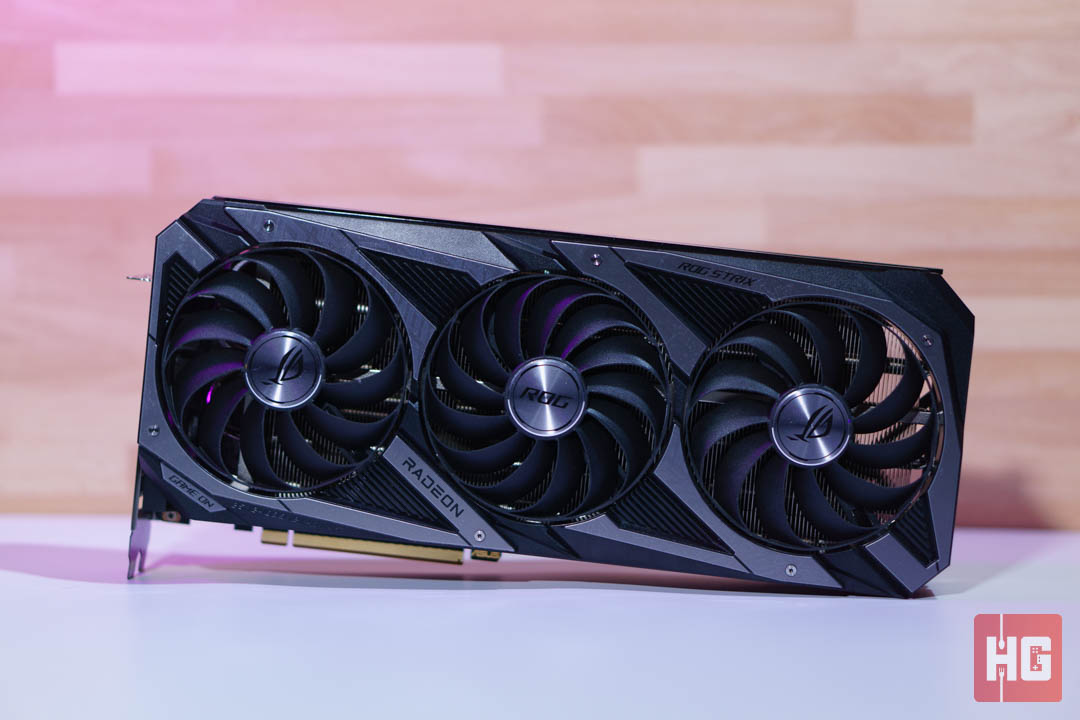
Three Axial-tech fans help cool down the card. ASUS is increasing the number of blades on the fans to 13 on the center and 11 on the side fans. All three come with their own outer rings but the side fans have a slightly trimmed barrier to allow more air to pass through the sides. The center fan, however, has a full-height outer ring to further concentrate air directly to the GPU spreader. The fans also turn off when the card is below 55°c for silent operation while in light GPU applications or in idle.
In terms of design, it sports a primarily gunmetal gray colorway with a brushed aluminum finish on most surfaces. The shroud and the backplate are all made out of aluminum that gives the card a tough and hefty feel. Everything feels solid and sturdy once it is bolted onto a proper PC case.
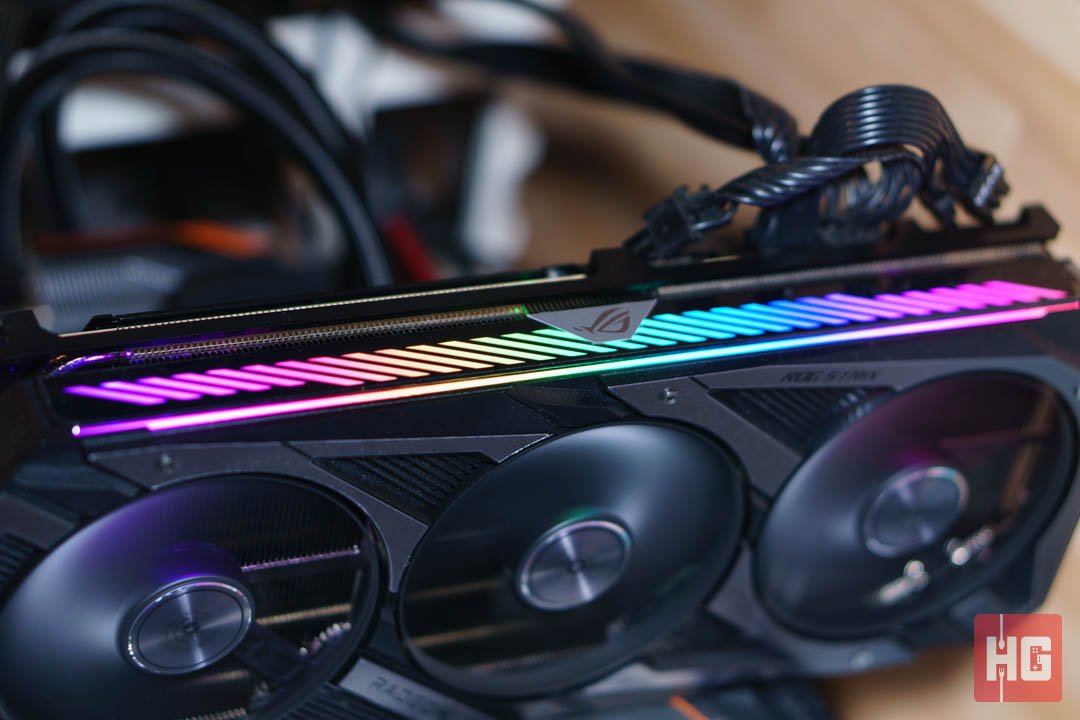
The ROG look is not complete without any RGB so ASUS is mixing things up this generation by giving the card an RGB strip at the side that nearly encompasses its entire side. Unfortunately, the ROG logo does not light up and is instead an embossed logo an aluminum plate. All its RGB lighting can be controlled via the ASUS Armoury Crate app and can be synchronized with other AURA SYNC-compatible devices.
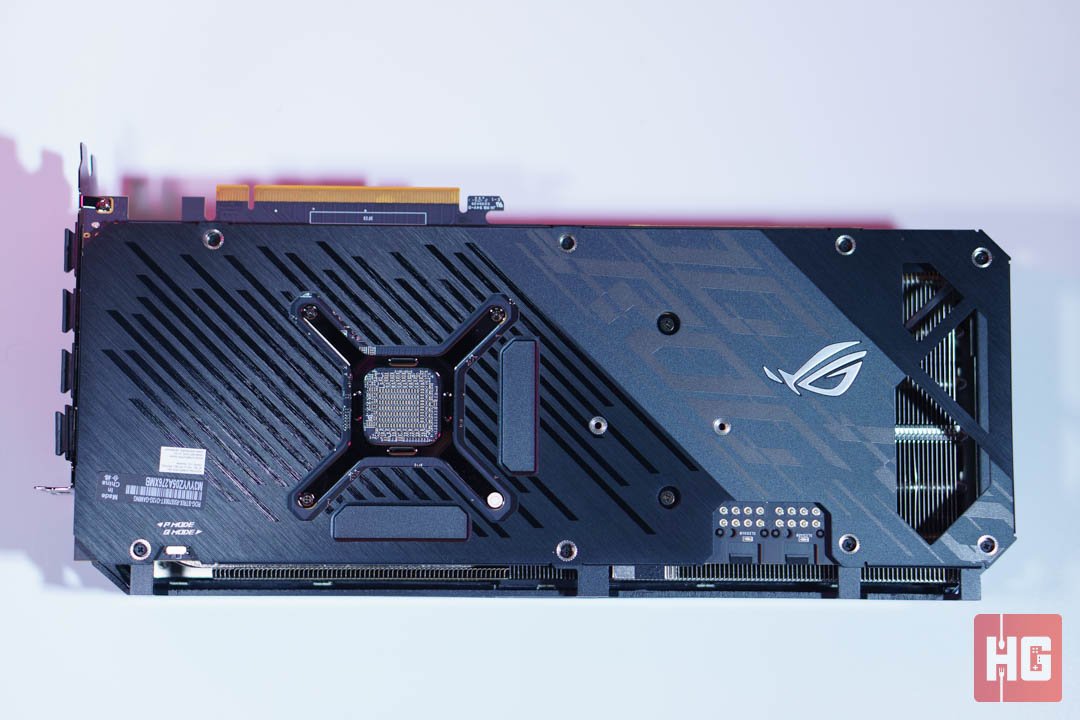
The backplate on the ASUS ROG Strix RX 6700 XT O12G is slightly more stylish now with black diagonal lines running through some parts of the card, and the last half having the ROG logo and symbol embossed. It is made out of aluminum and acts as a passive cooler for PCB and chip on the other side.
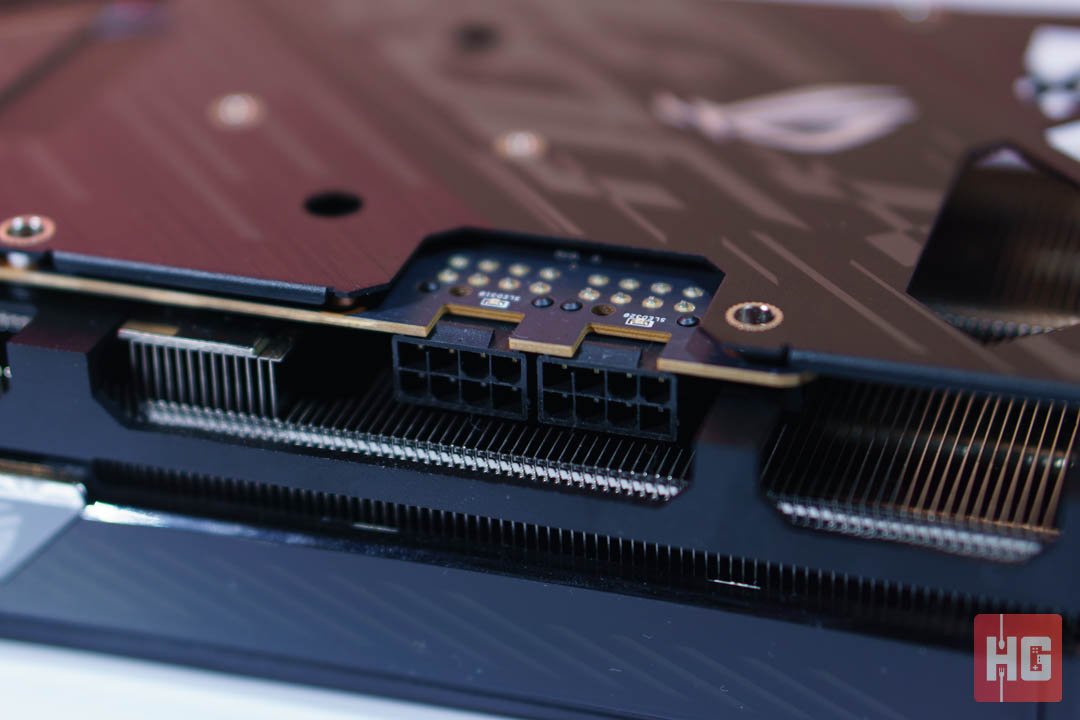
ASUS is slightly upping the power ceiling for the ROG Strix RX 6700 XT by using two 8-pin PCIe connectors at the side instead of the vanilla 8 + 6 configuration. They are also bringing in their FanConnect II feature that allows for two PWM fans to be connected to the GPU directly.
Meanwhile, the back sports a total of four display connections: three DisplayPort 1.4a ports and a single HDMI 2.1. Nothing too out of the ordinary here. Those who like a bit of tweaking for the card without actually overclocking can switch performance from Quiet to Performance mode via a switch at the side.

The ASUS ROG Strix RX 6700 XT O12G was tested using a suite benchmarks, which include synthetic tests and games using varying APIs. The latter were run at 1920 x 1080, 2560 x 1440, and 3840 x 2160 with Vsync disabled. Ray Tracing will be tested separately for GPUs that support it but vendor-specific features like DLSS will not be used to maintain parity. The card was put to the test using the following components:
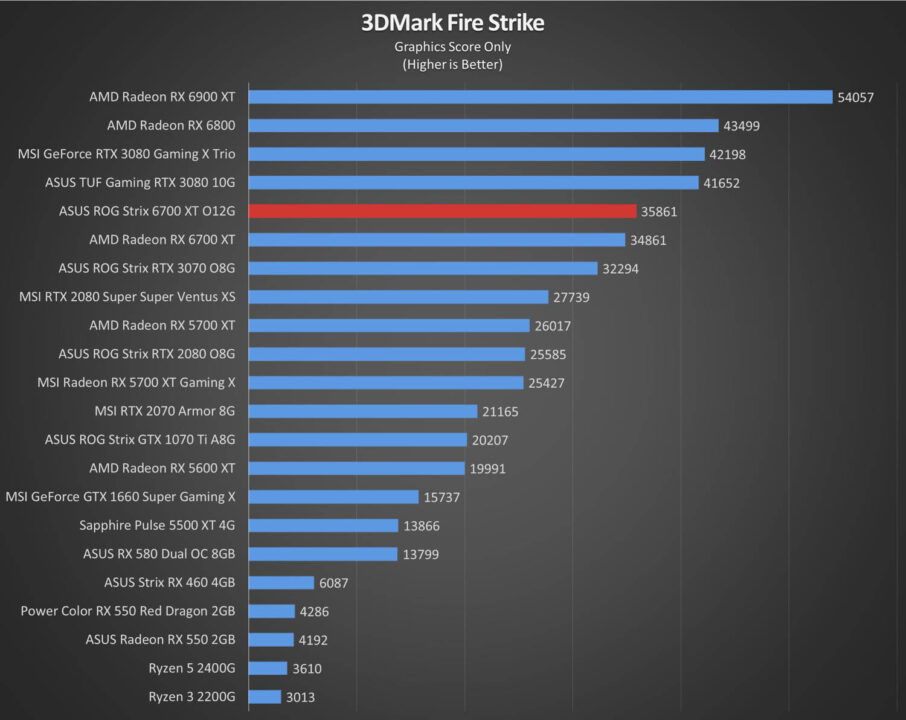


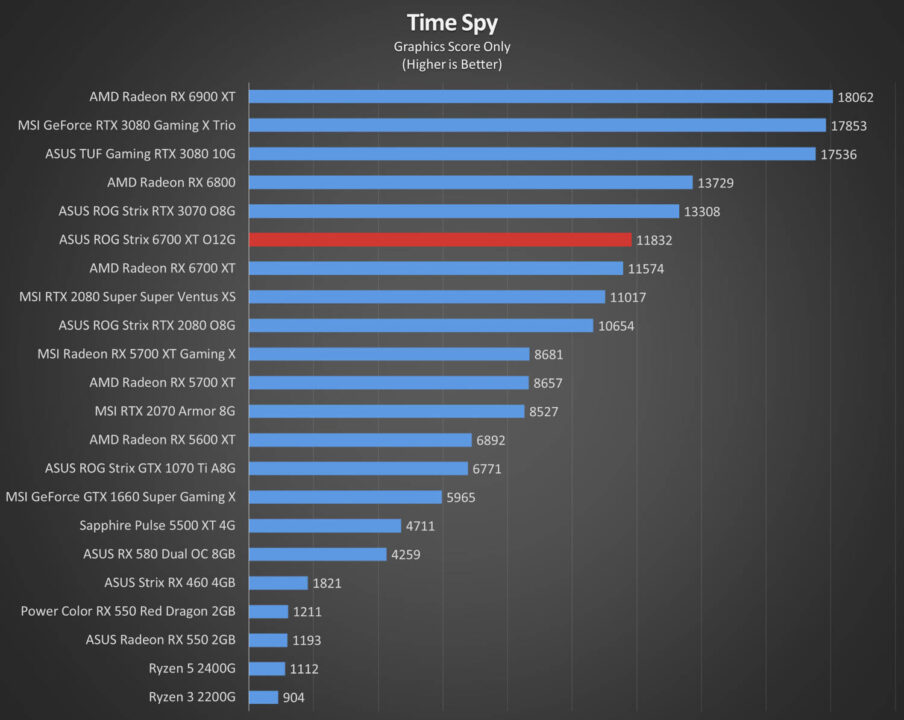

The ROG Strix RX 6700 XT O12G makes a great showing on synthetic benchmarks. It positions itself right below the more expensive cards and has a slightly better score compared to the reference RX 6700 XT thanks to its higher clock speeds. It even beats out the RTX 3070 in DX11 Fire Strike but losing at the DX12-based Time Spy.
Ray Tracing is not the strongest suit or AMD this generation. Based on Port Royal, Ray Tracing performance on the RX 6700 XT, and by extension other AMD cards, are still lackluster compared to their direct rivals.
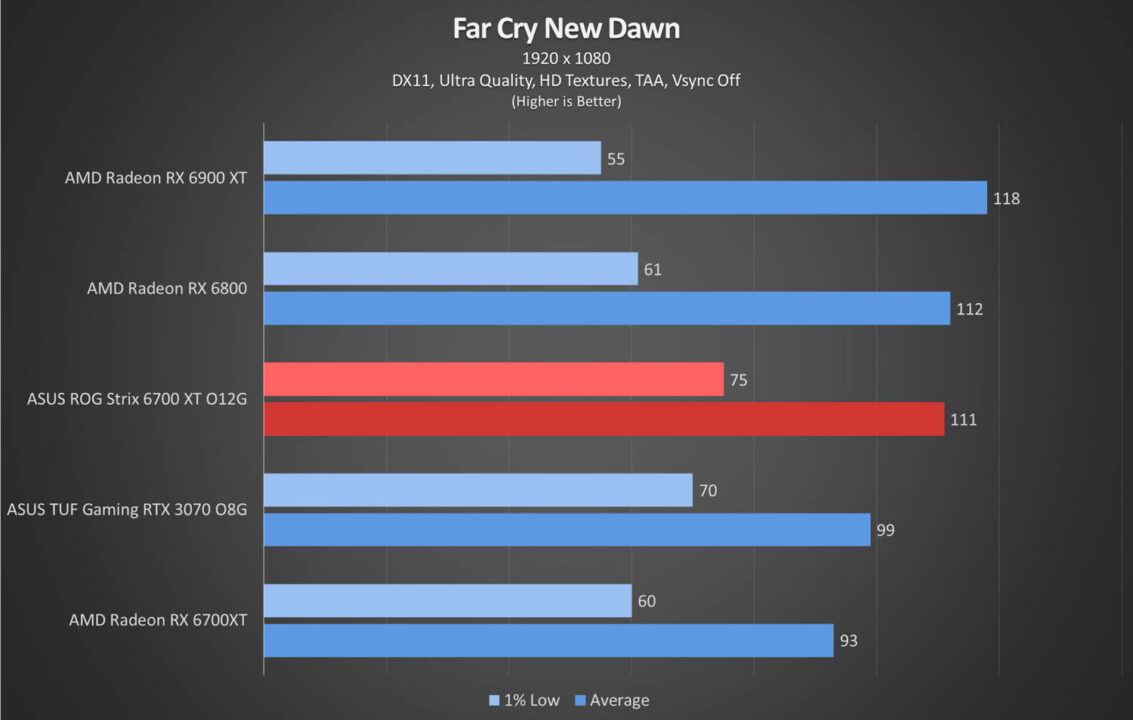
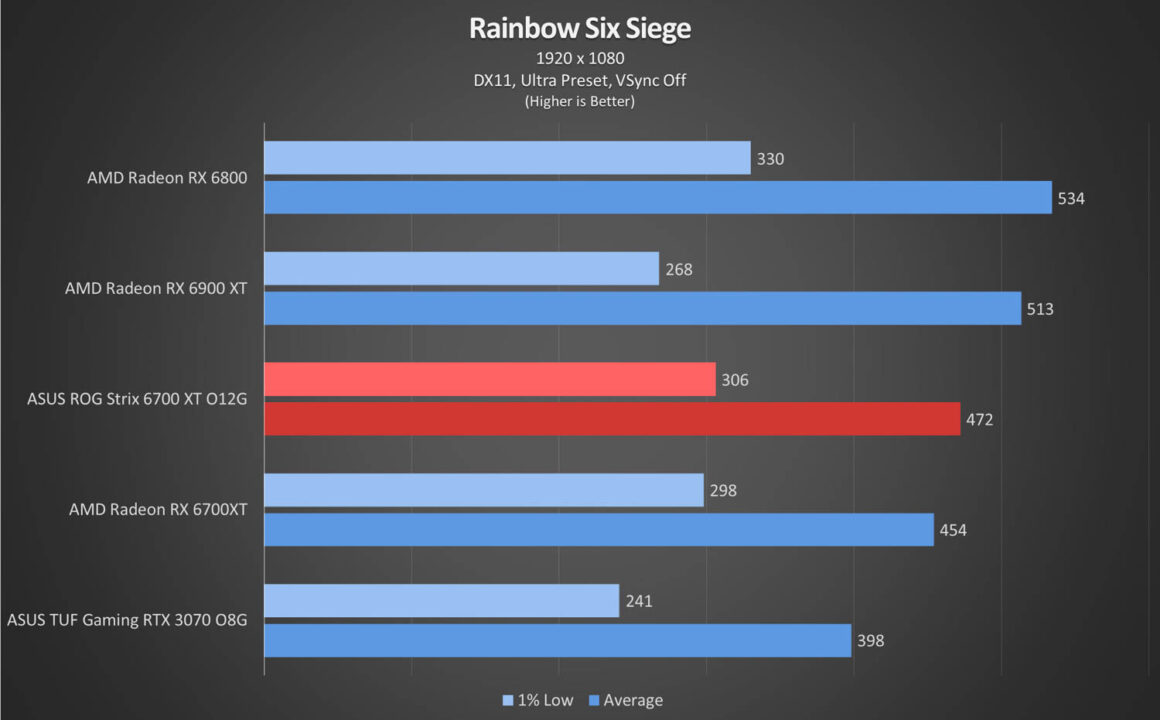


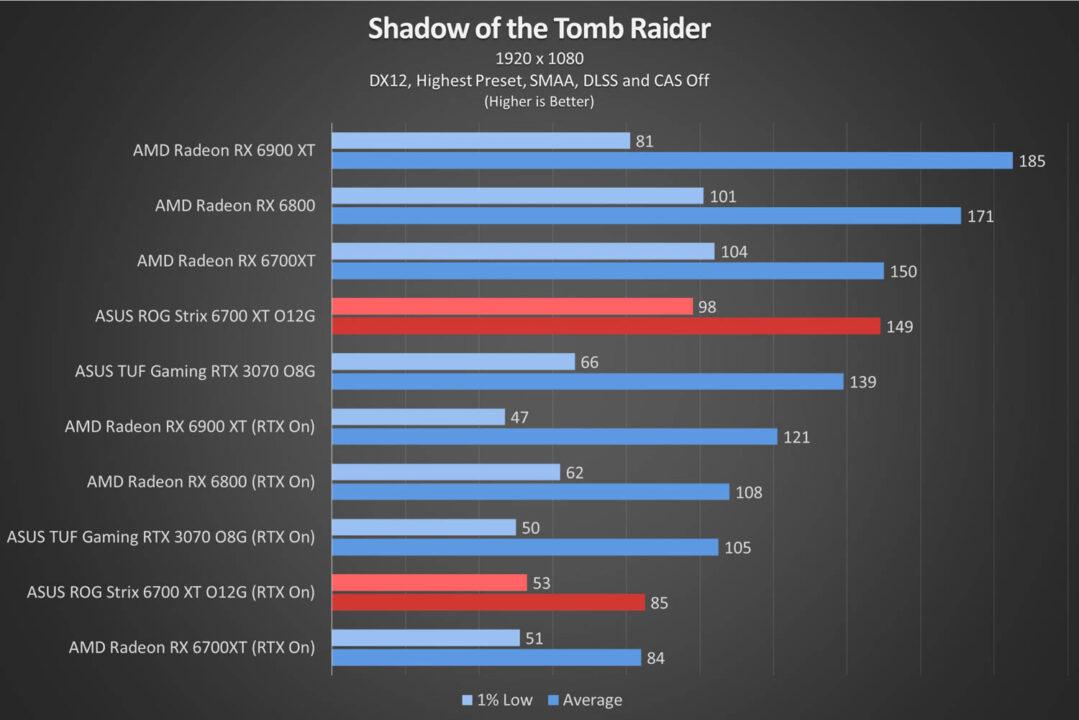

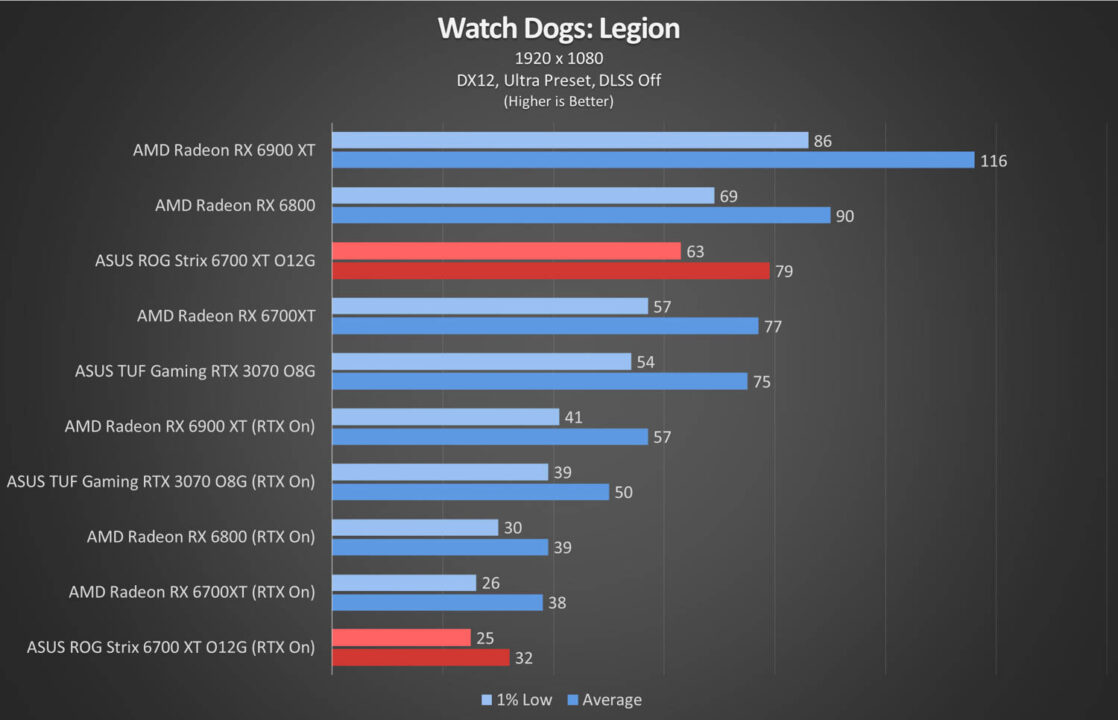

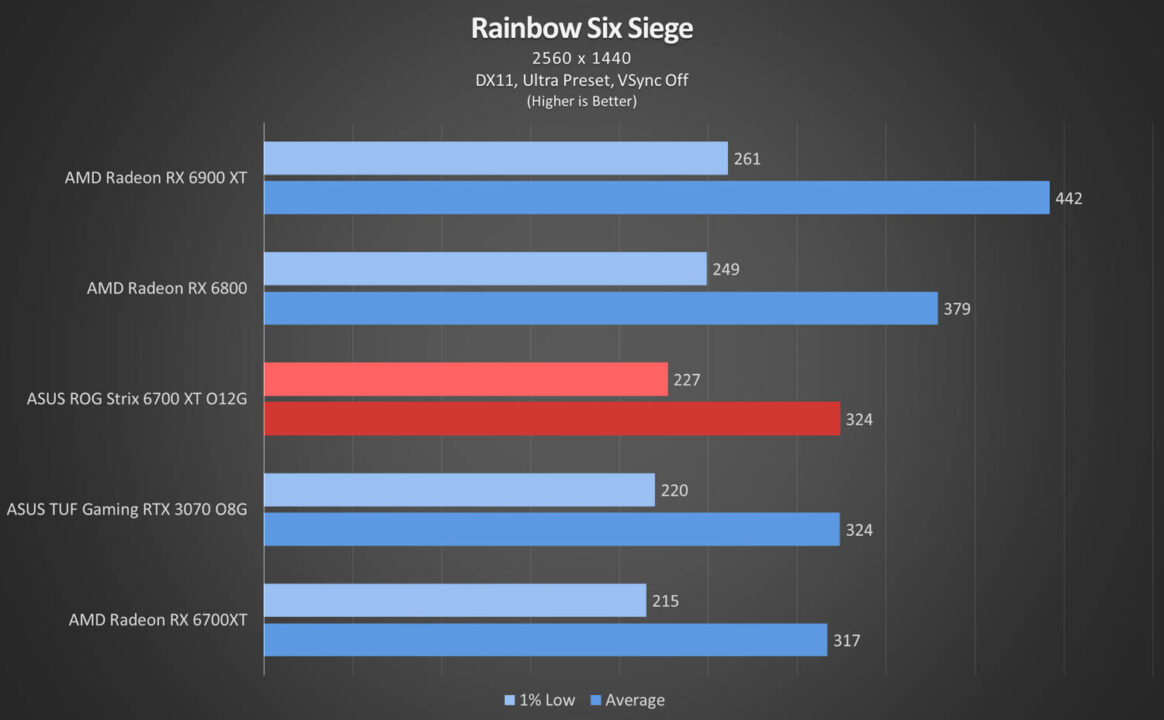

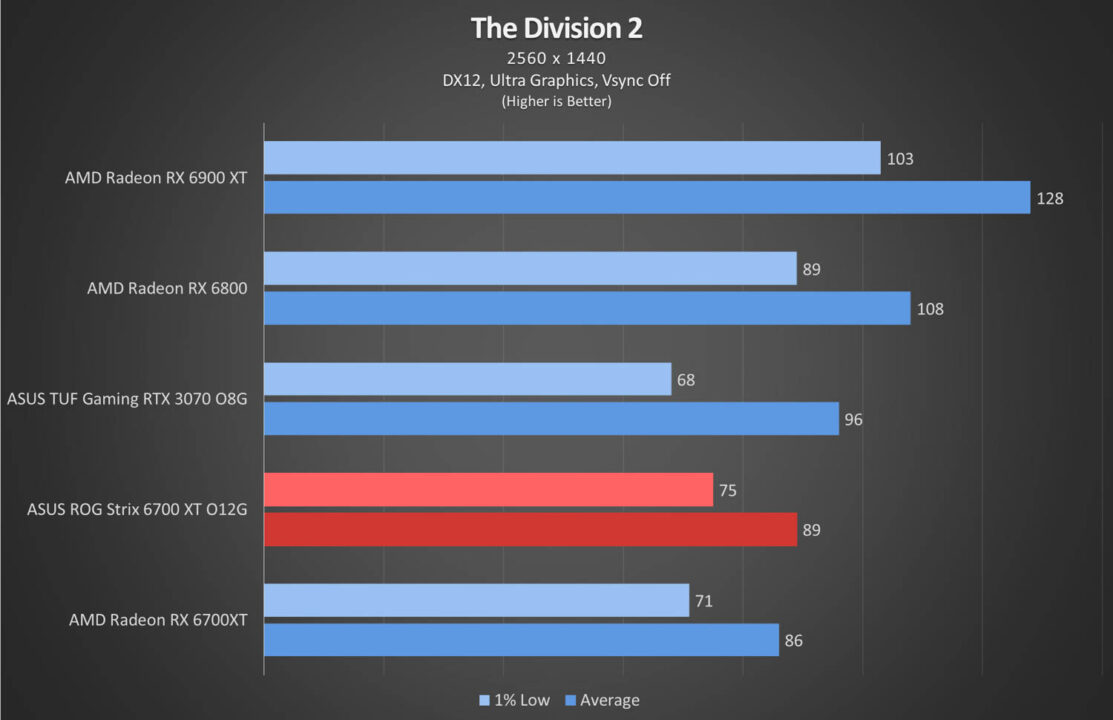
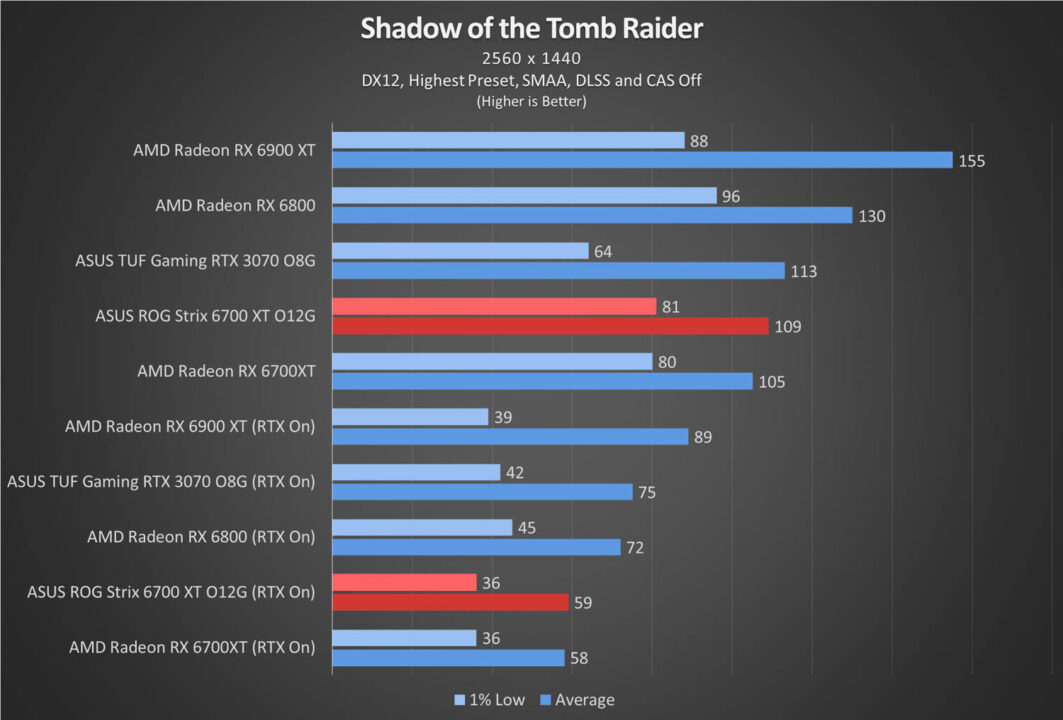
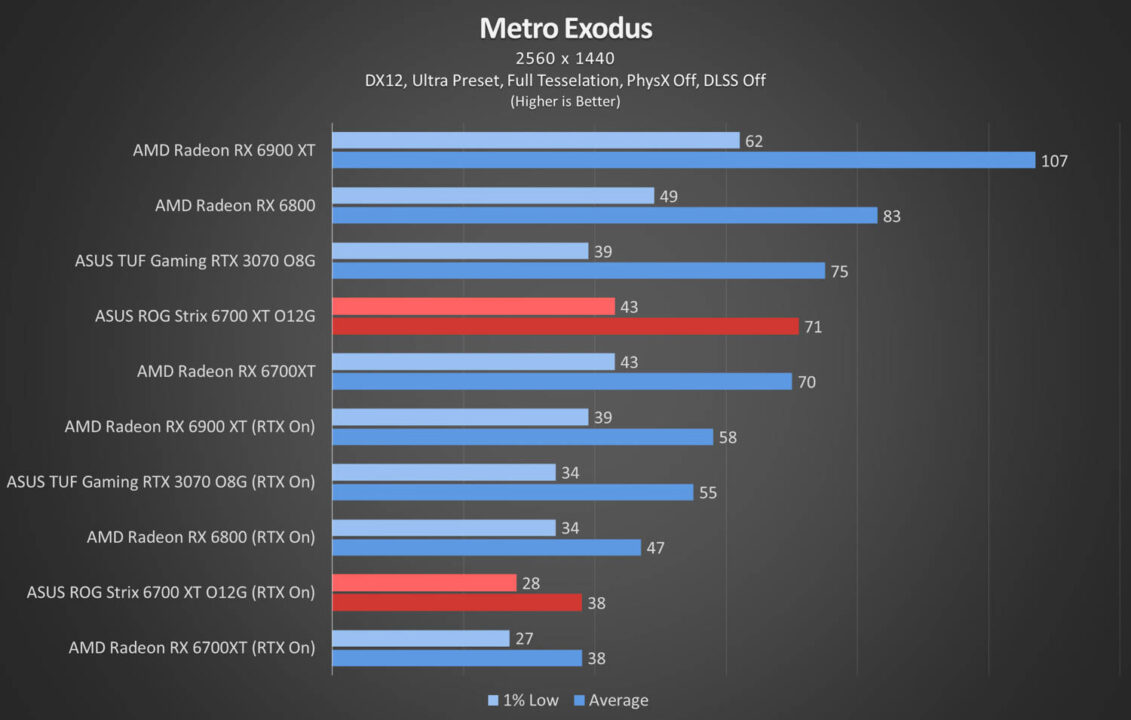
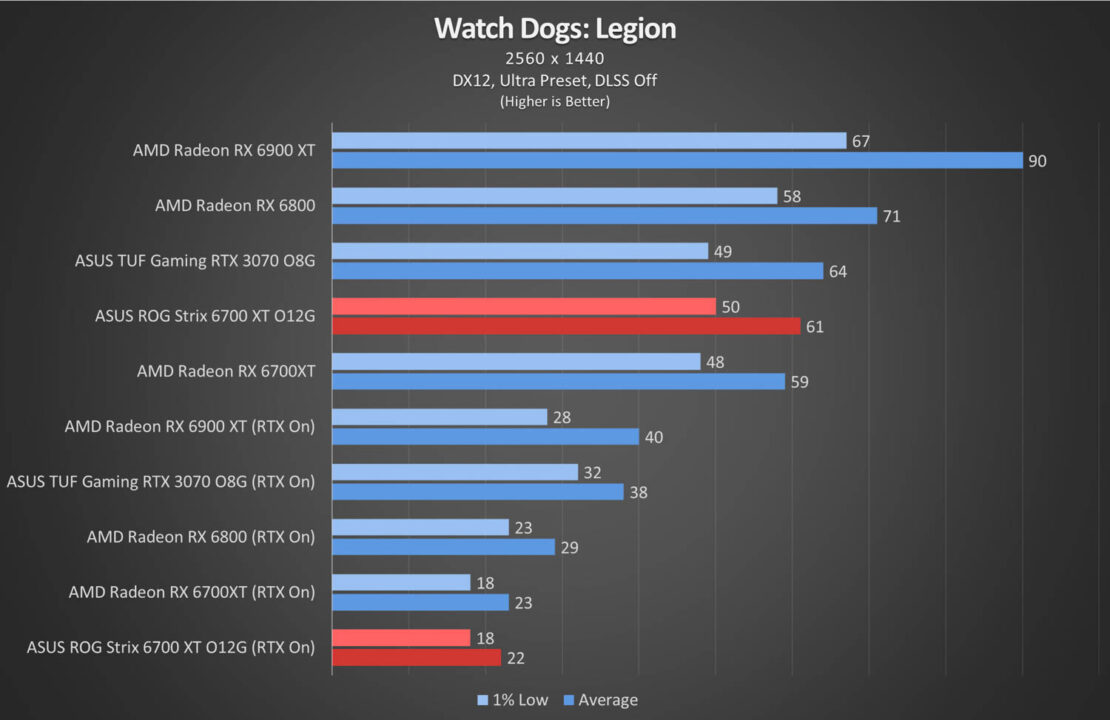

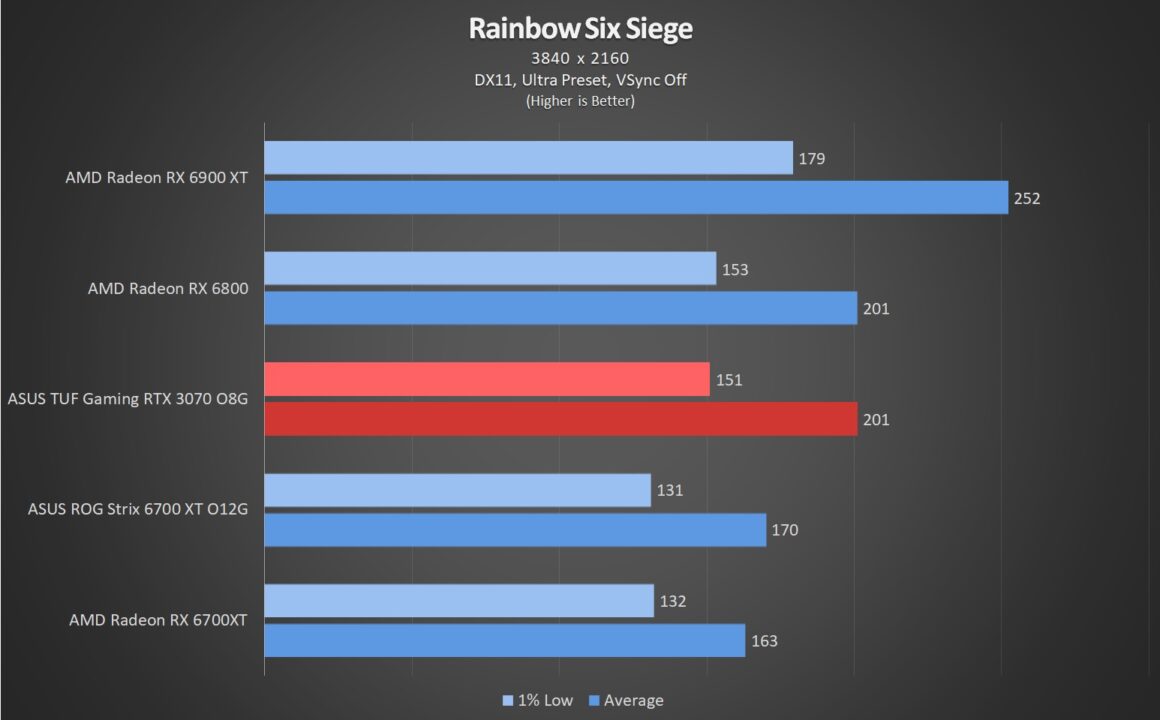
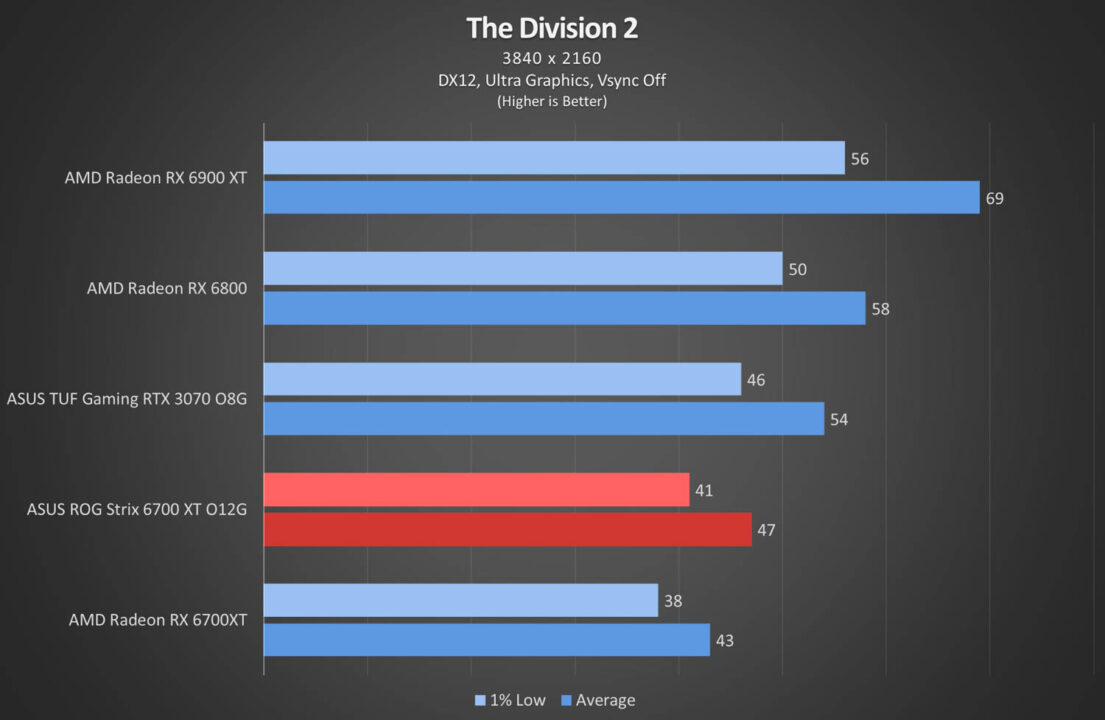


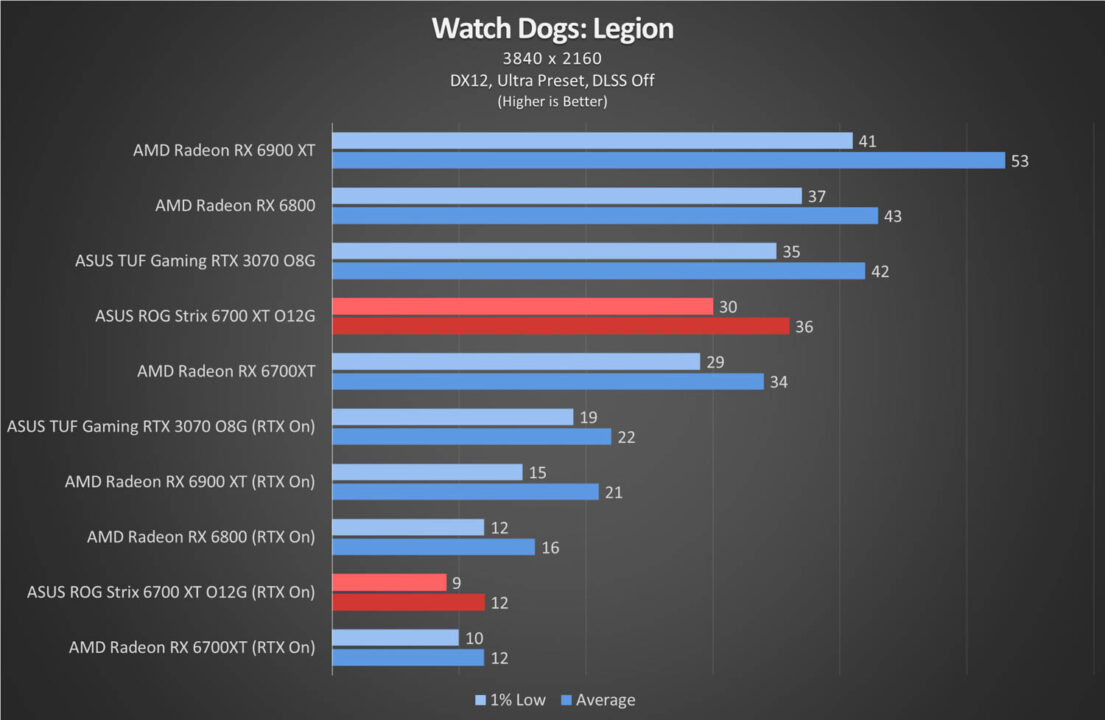
Gaming benchmarks reflect the results shown by the synthetic tests. The ASUS ROG Strix RX 6700 XT O12G still offer relatively high framerates on all titles only faltering to reach the minimum 60fps average at 3840 x 2160 with all the settings turned on.
Again, Ray Tracing performance severely handicaps the framerates produced by the card significantly. It even dips down to 15fps in Watch Dogs: Legion at 3840 x 2160. It seems that AMD’s only hope in getting decent framerates with Ray Tracing is when FideliyFX Super Resolution, their answer to DLSS, comes out.
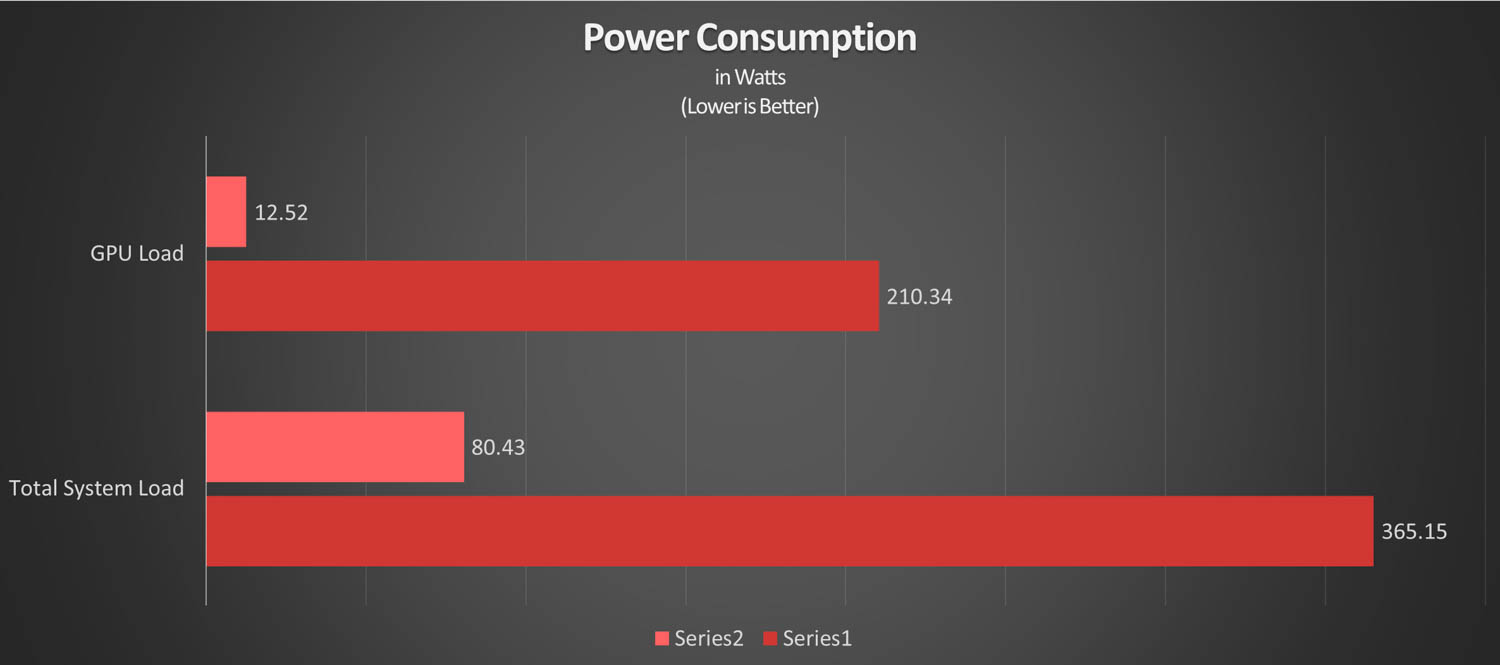
The AMD Radeon RX 6700 XT has a TDP 230W and consumes right around that figure under maximum load on games and on synthetic benchmarks. Surprisingly power consumption takes a nose dive down when the GPU is left on idle at just below 13W.
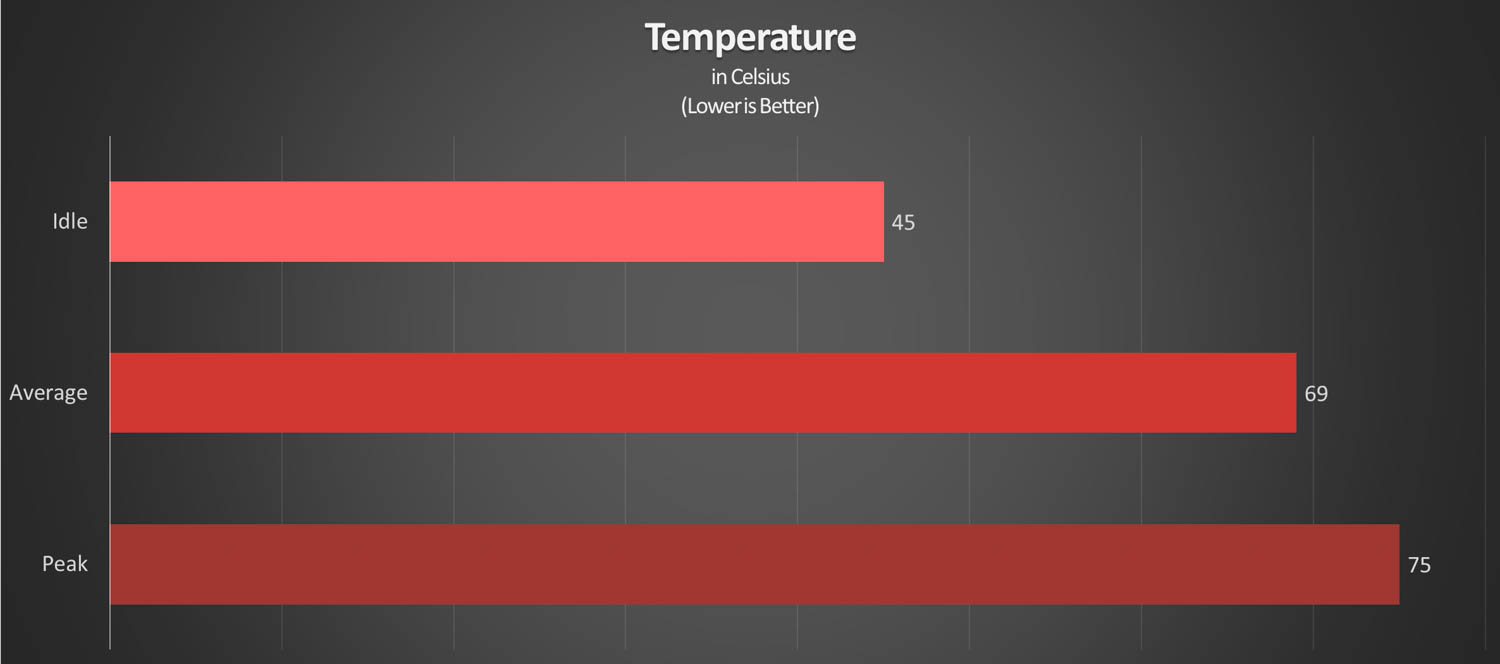
The card is able to cool itself rather efficiently thanks to ASUS’ effort on its cooling system. The massive fin array and triple fans quickly scrubs out heat without much noise to just 75°c at maximum load and an average of 69°c during a looped stress test. It will also remain whisper quite when left idle at 45°c since the fans do not spin until they reach 55°c.
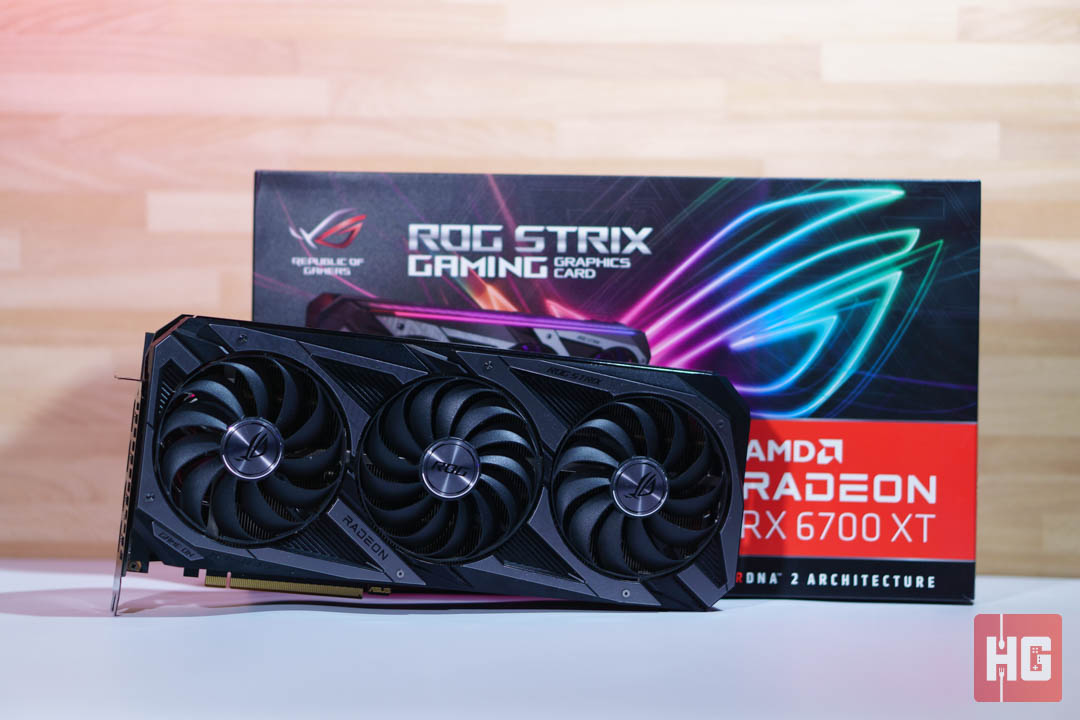
The ASUS ROG Strix RX 6700 XT O12G has shown great promise thus far. It still comes with the great performance offered by the RX 6700 XT (aside from Ray Tracing) and improved on AMD’s formula by using a larger heatsink, better fans, and higher stock clock speeds as well as the ROG sheen we all know and love.
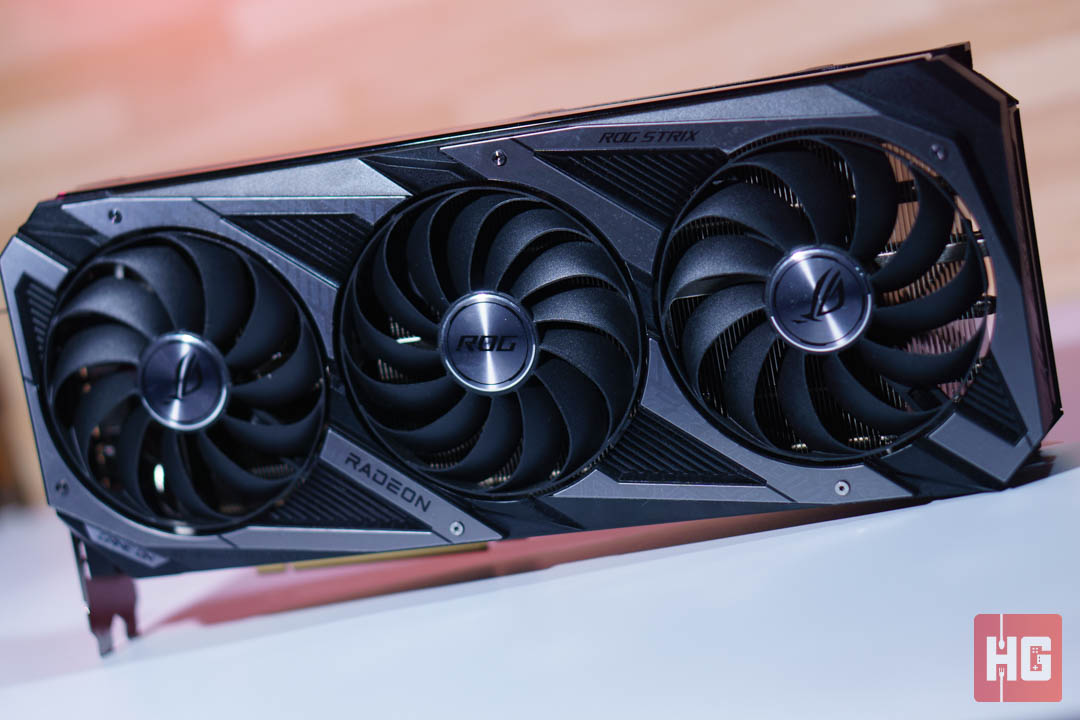
There is a bitter pill needed to swallow, however, and that is its price. With everything going on in the world right now, GPU prices have skyrocketed exponentially. At this time, the ASUS ROG Strix RX 6700 XT O12G has an asking price of PhP 51,490, which is way more than the initial price of the AMD Radeon RX 6700 XT back on release at only USD 479 or around PhP 24,000.

Pretty much every card right now are above SRP due to the global chip shortage, however, we still believe that the ASUS ROG RX 6700 XT O12G is one heck of a card despite how things look. This is why we are giving it our seal of approval.
If you are eager to get a card in spite of inflated prices, then the card will live up to expectations aside from more bleeding edge options like Ray Tracing. Hopefully, prices will go down soon so more people can enjoy this gem of a card.
If you fancy other graphics cards, just click on our reviews:
